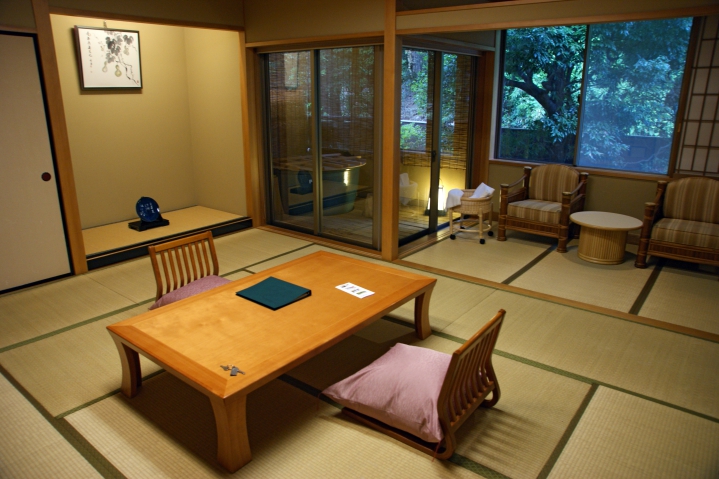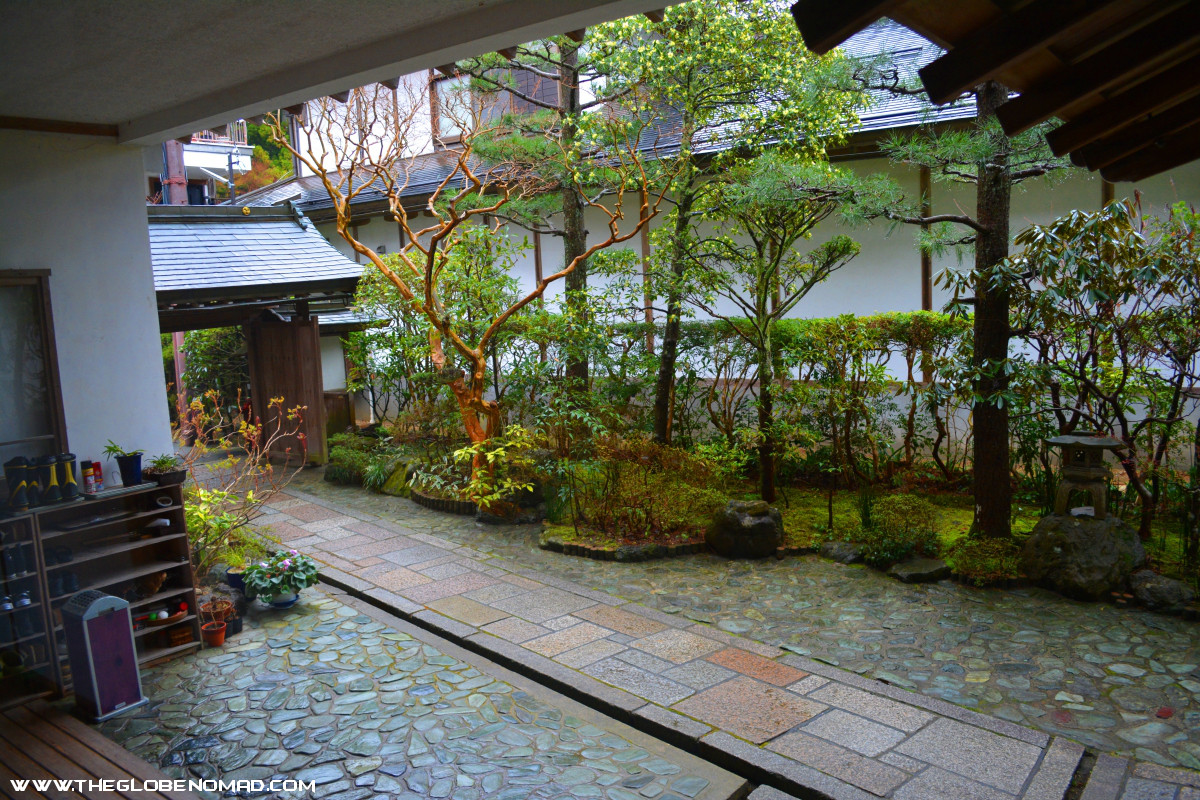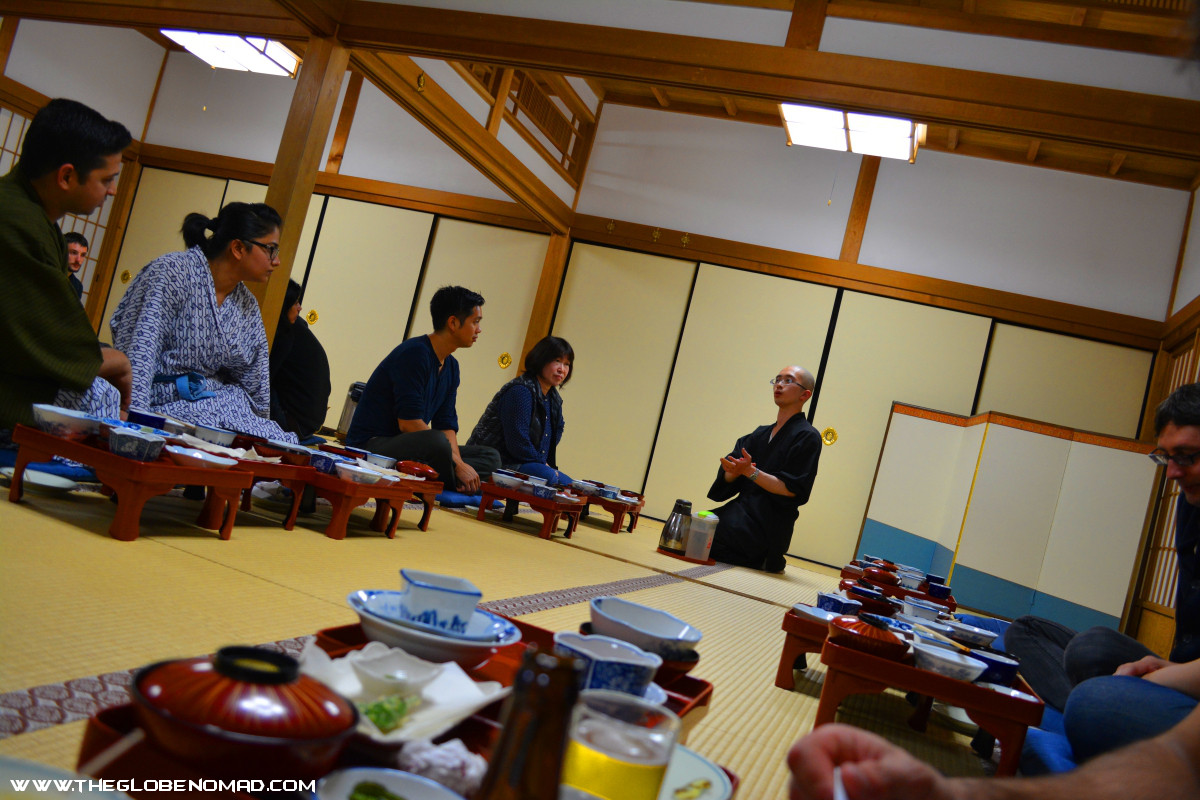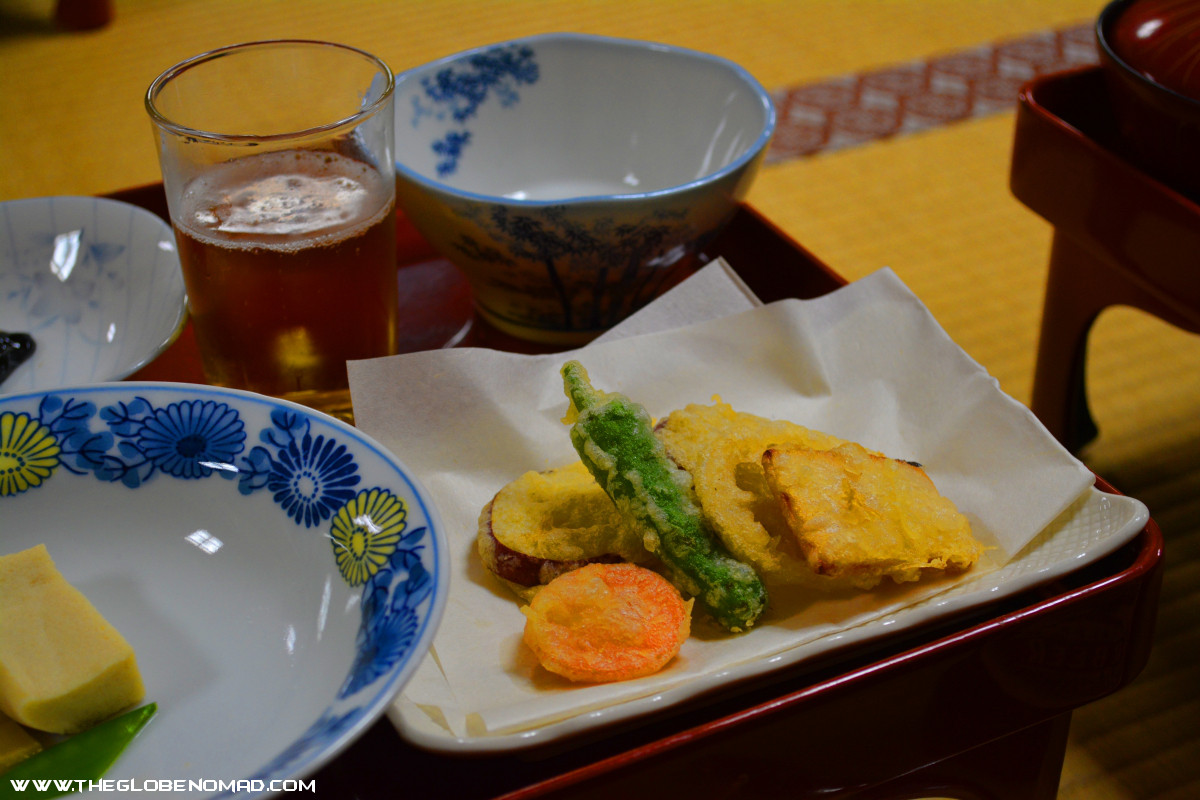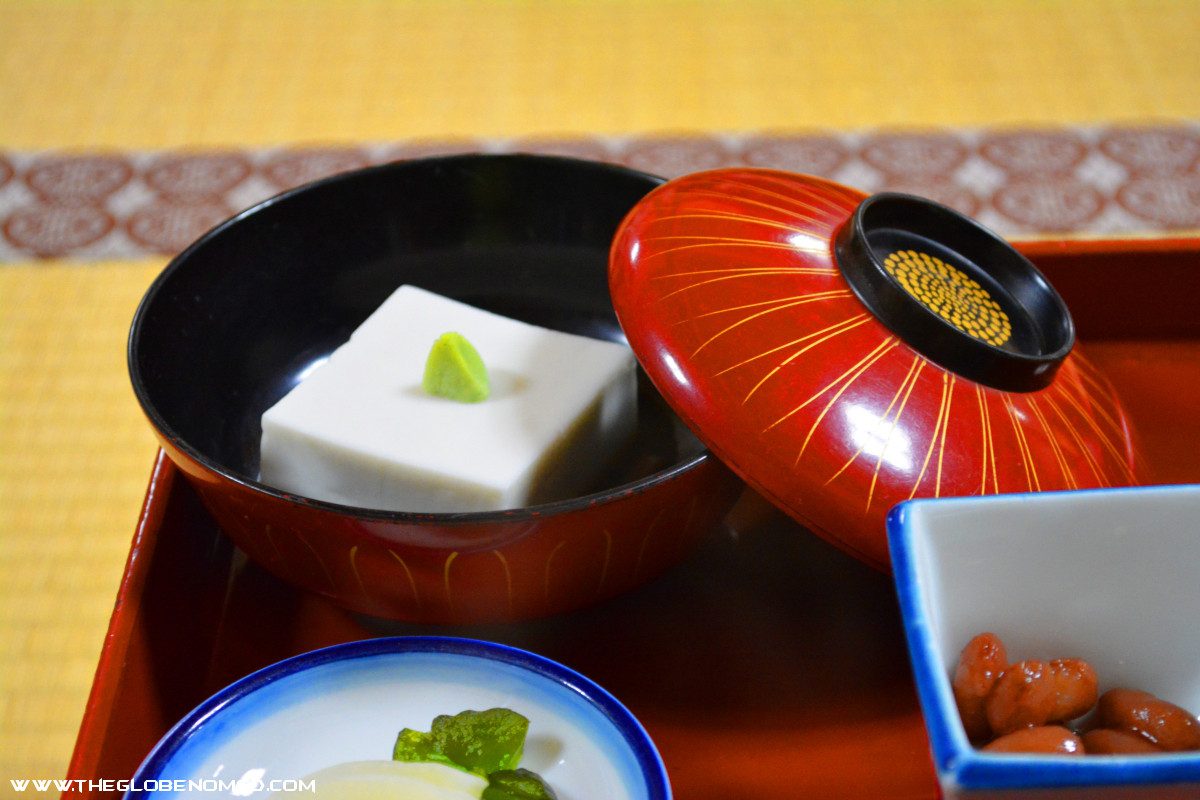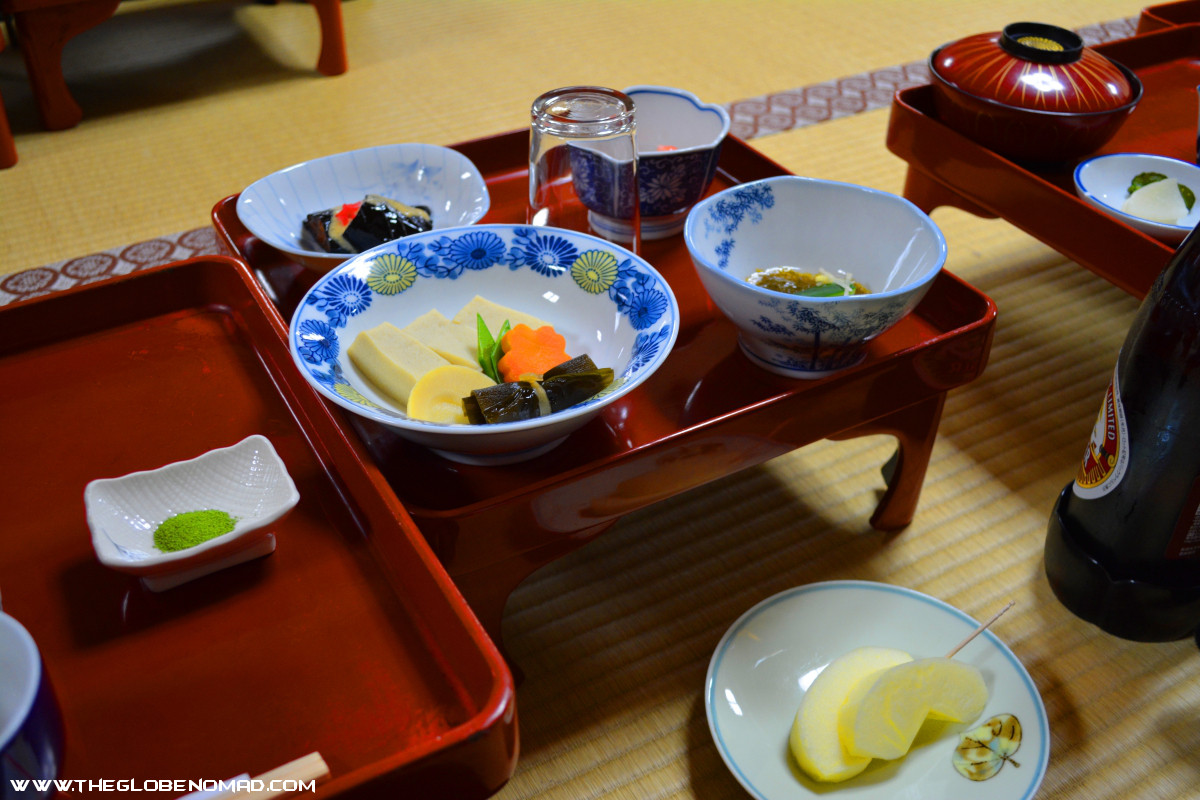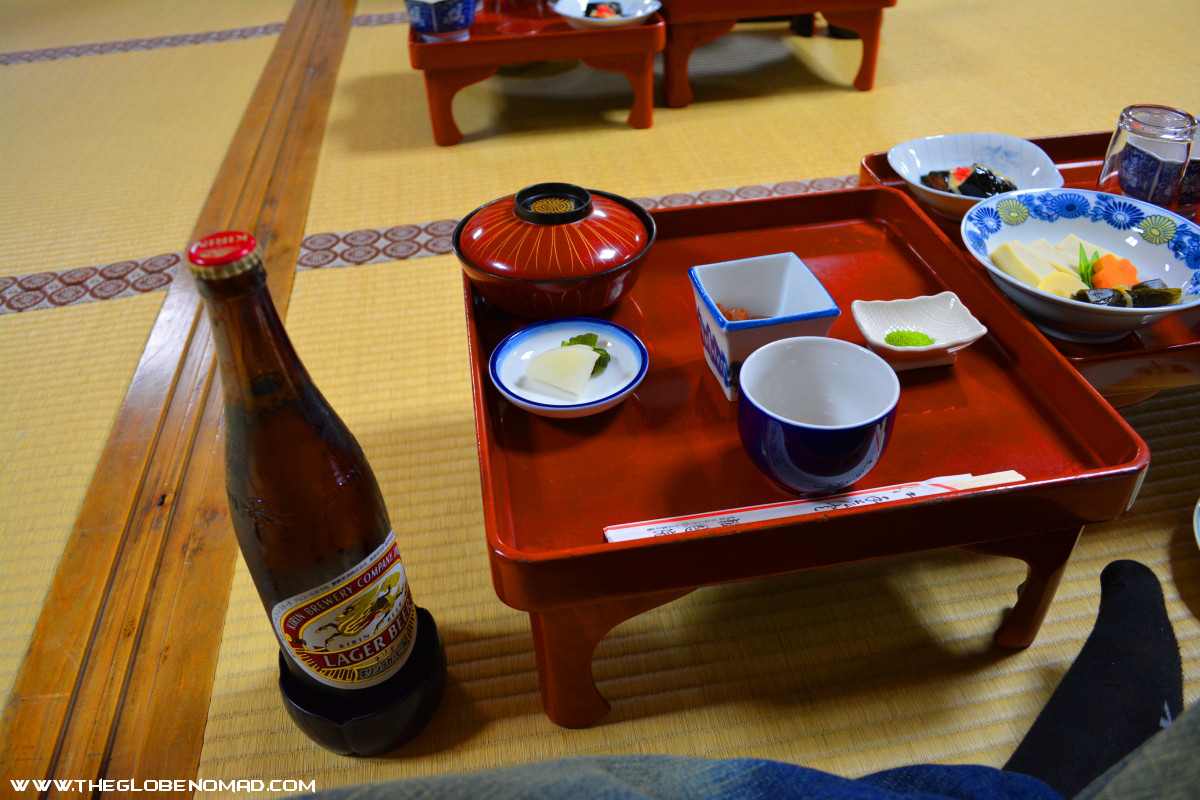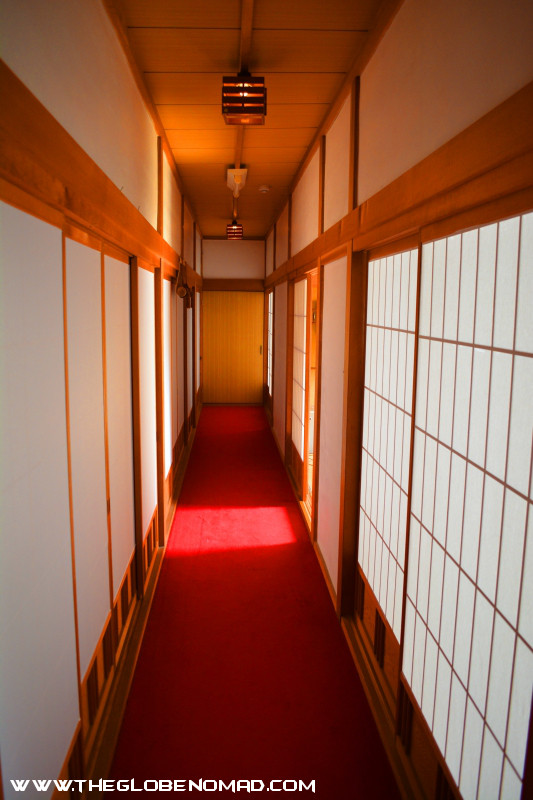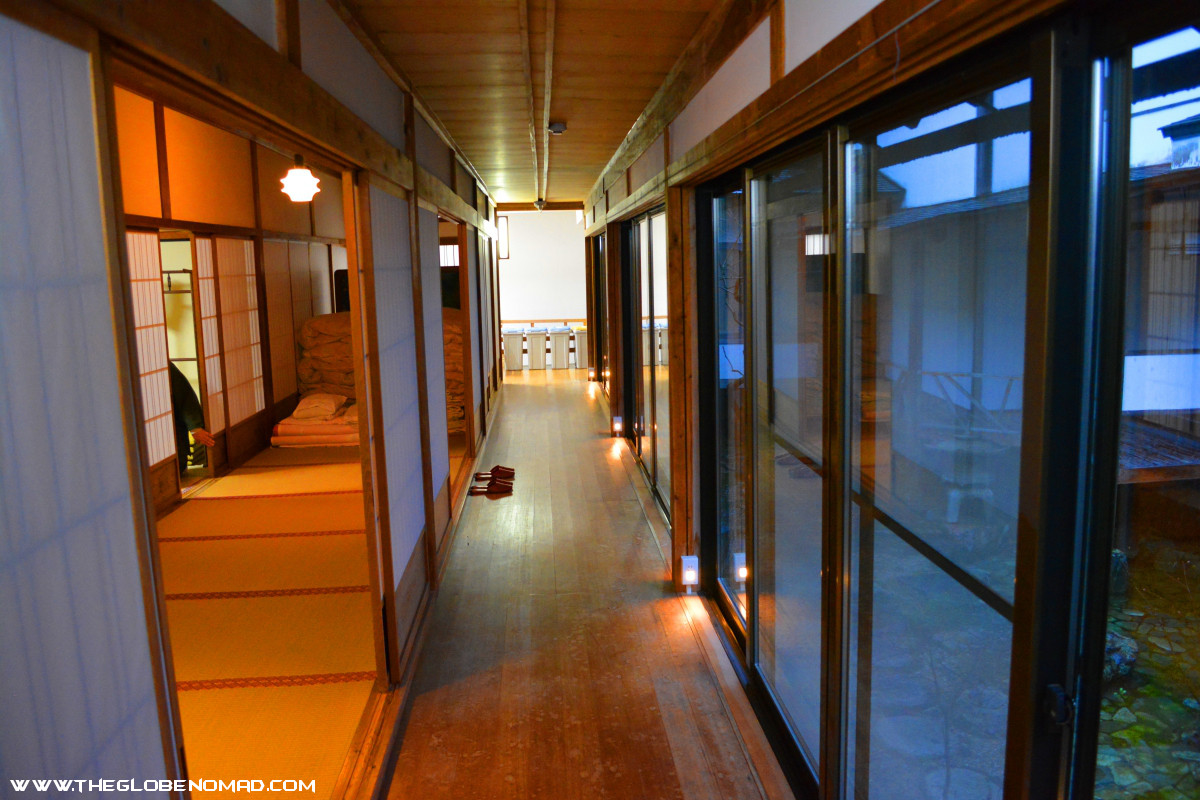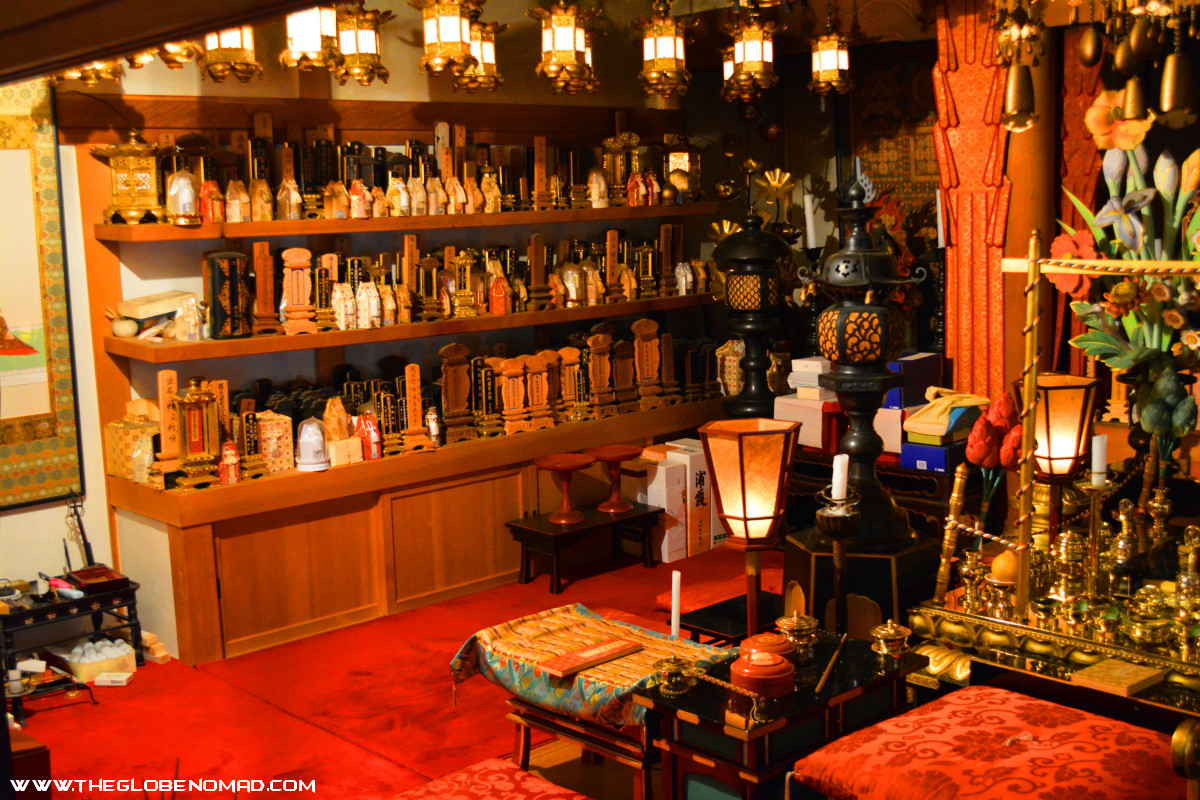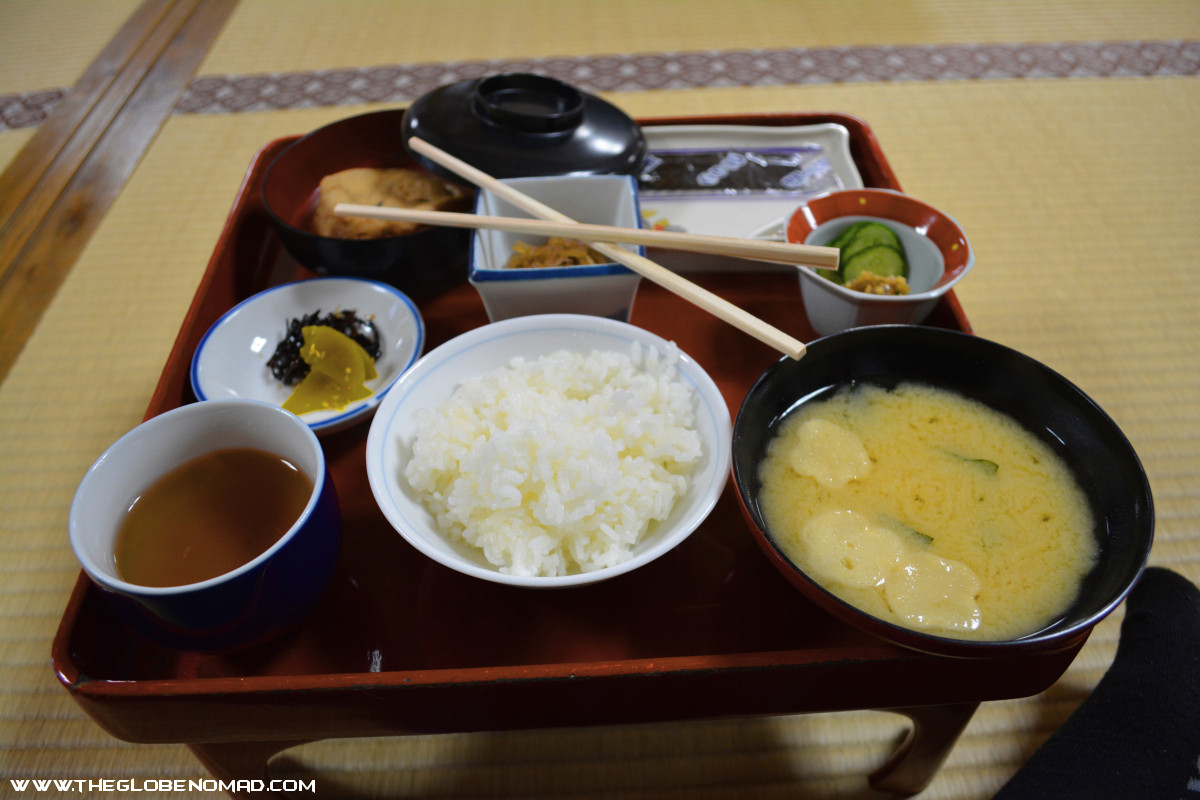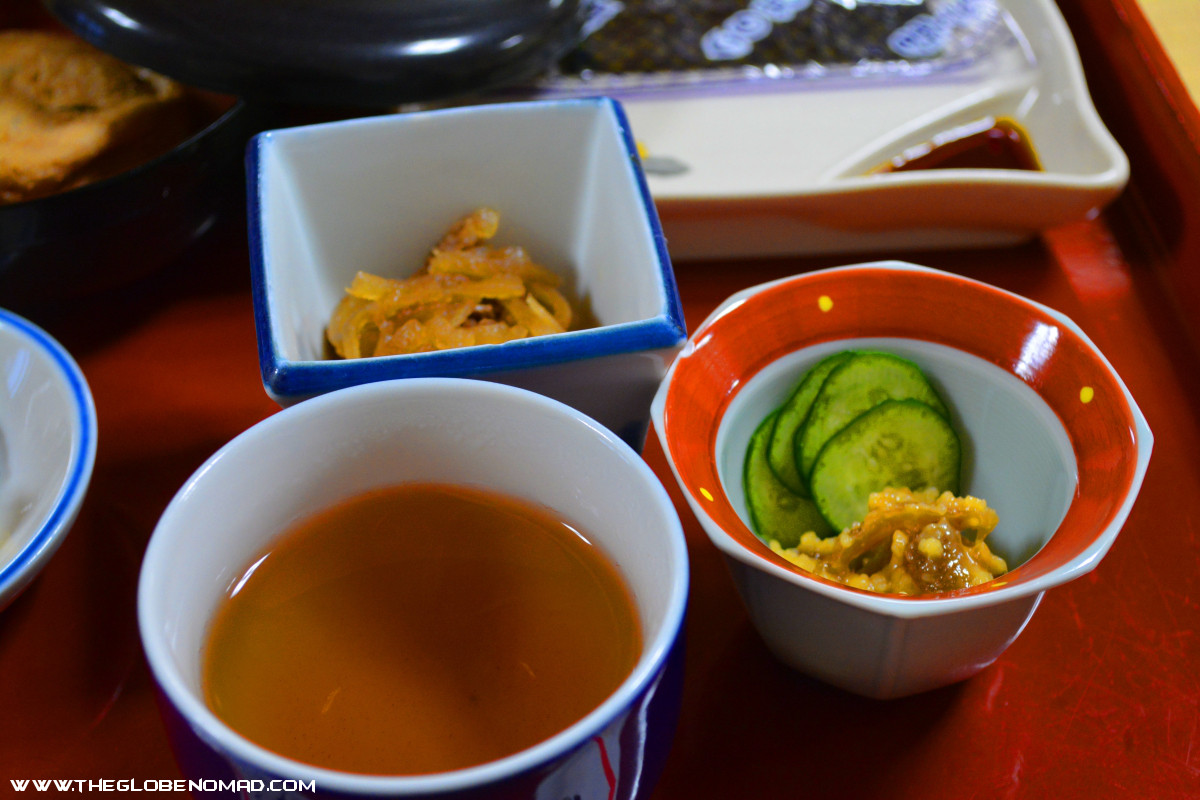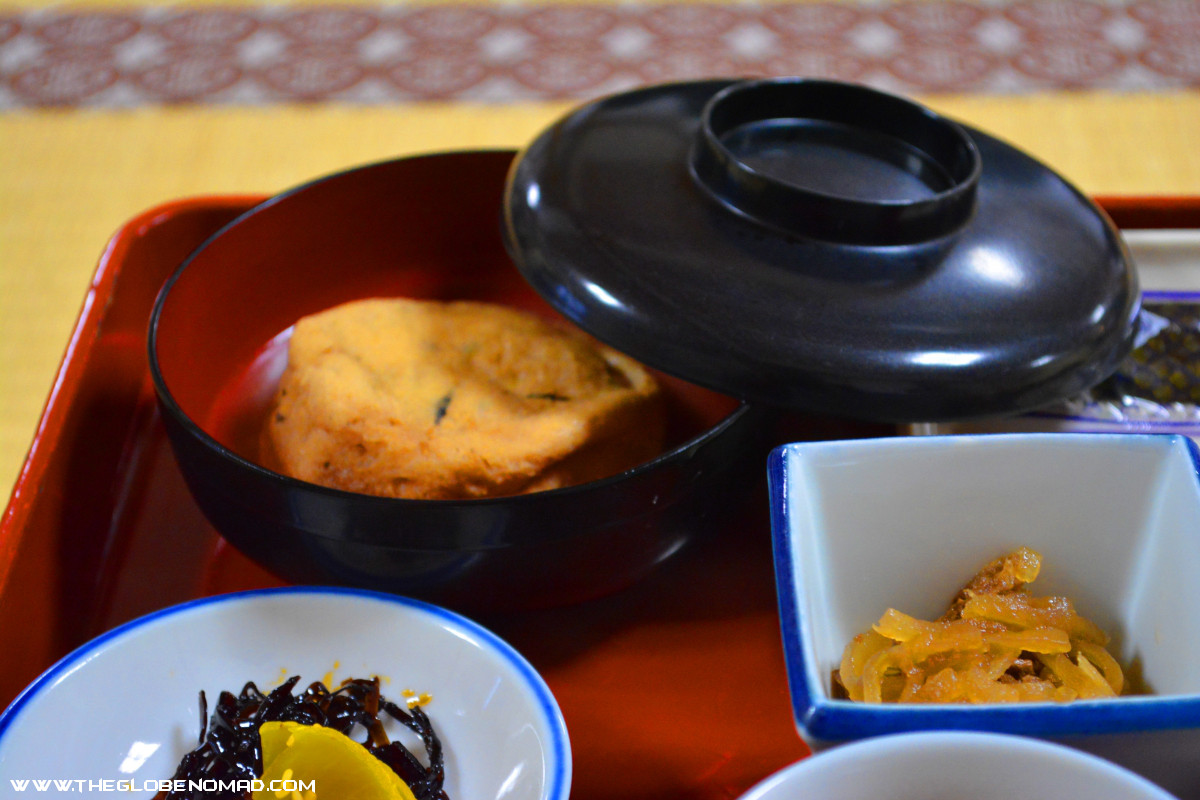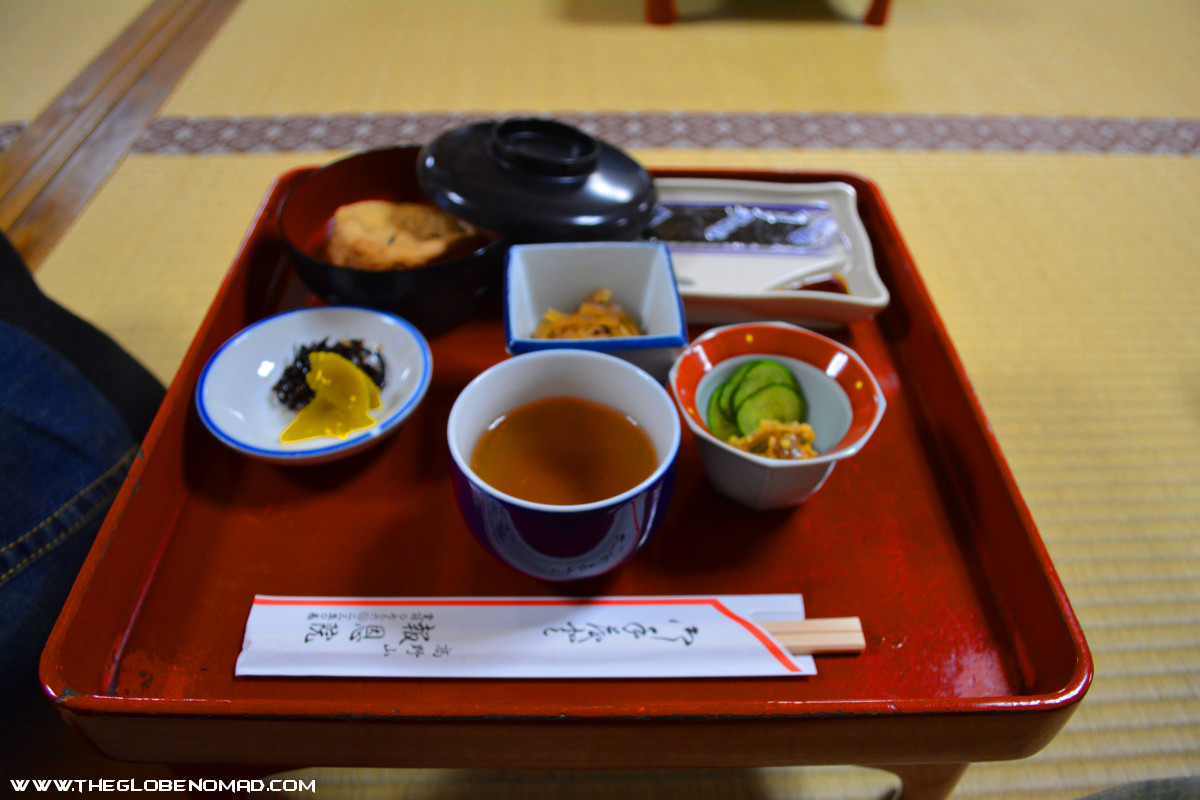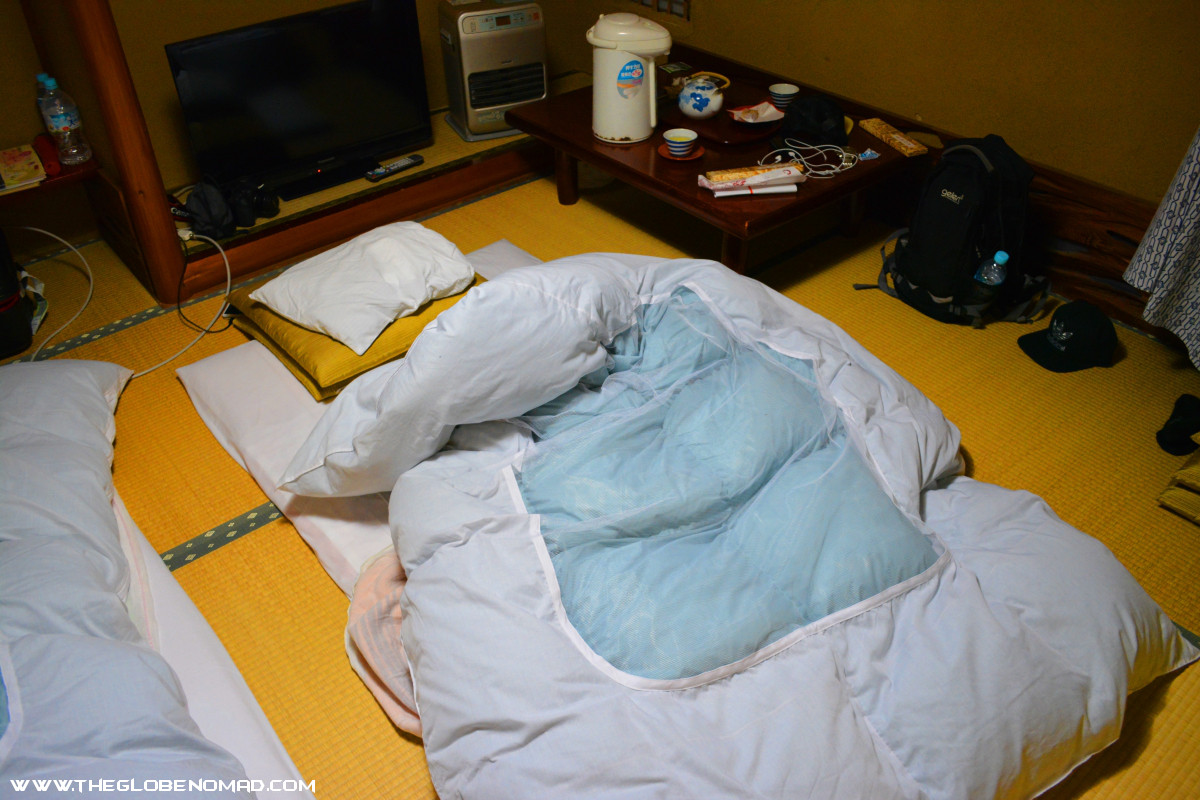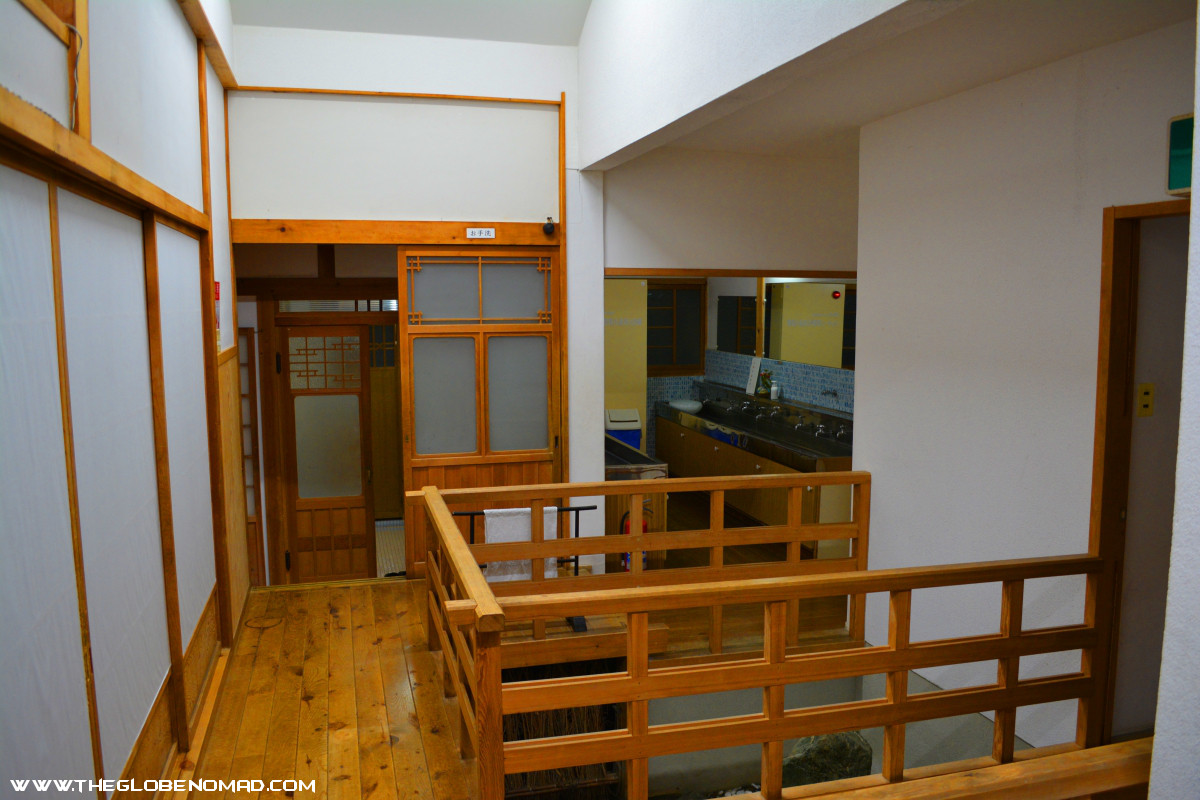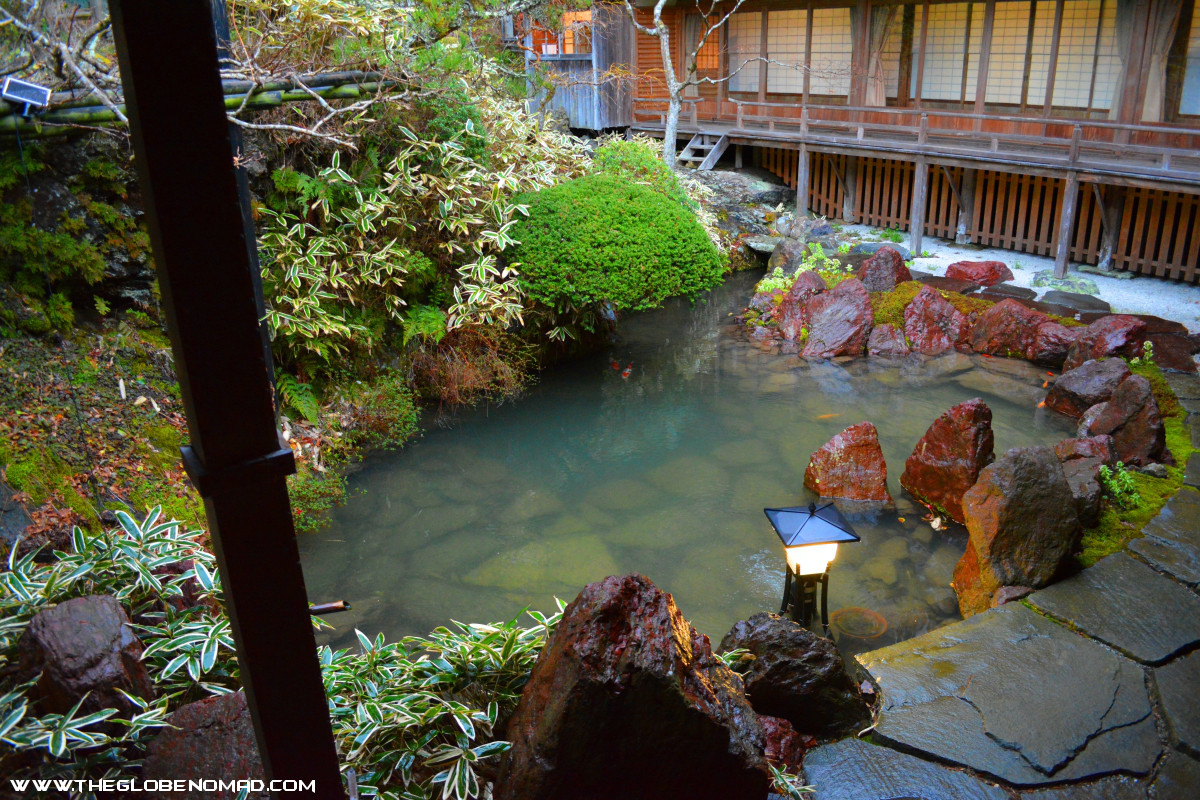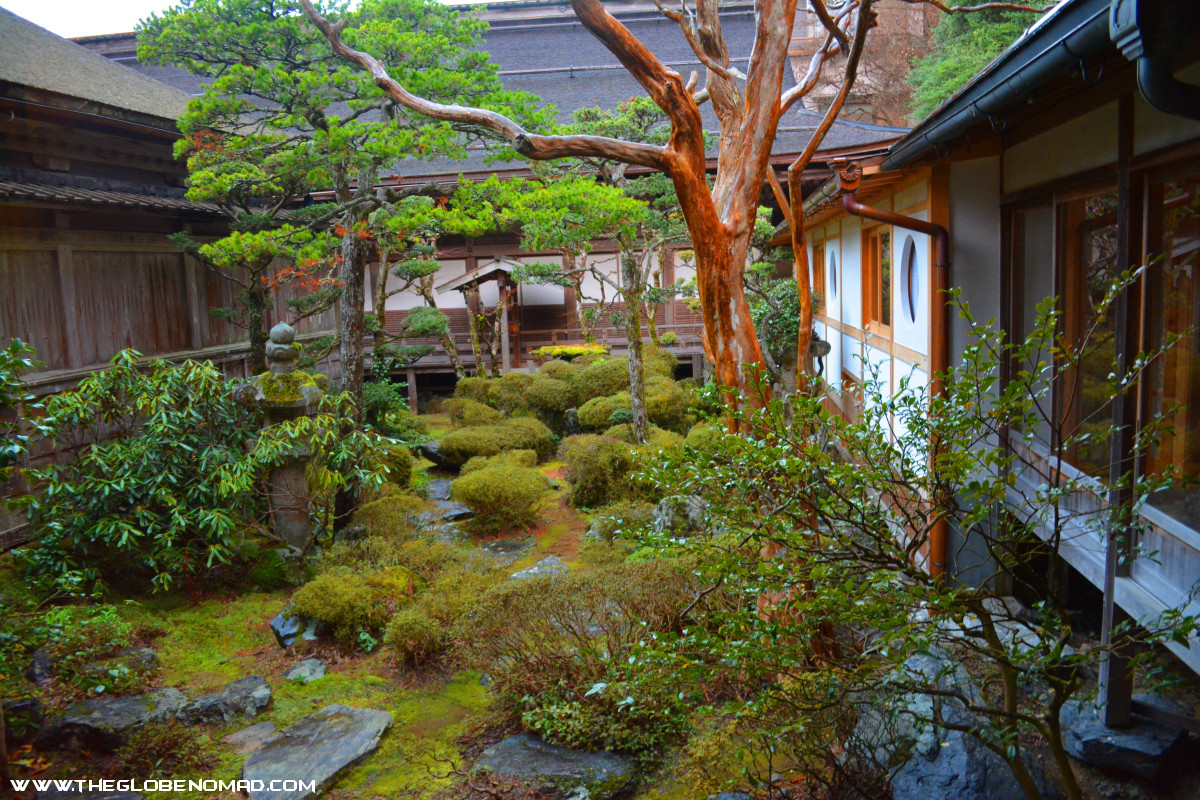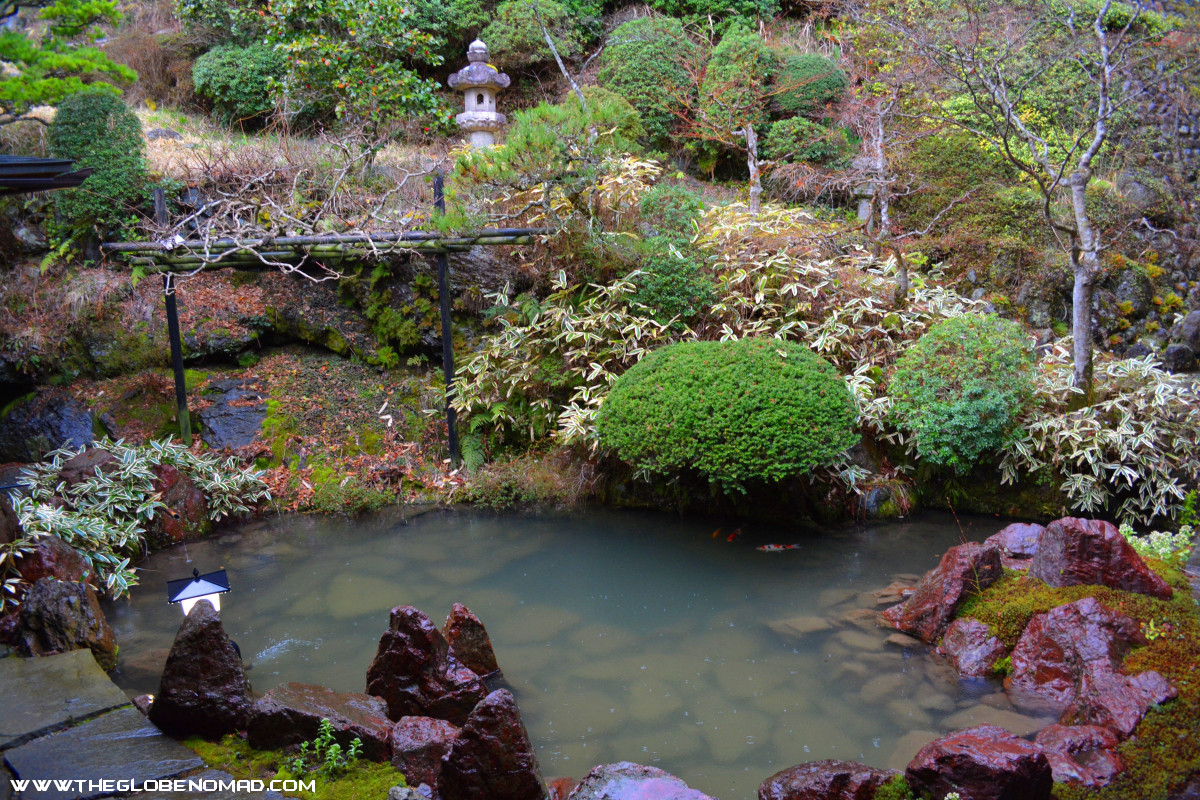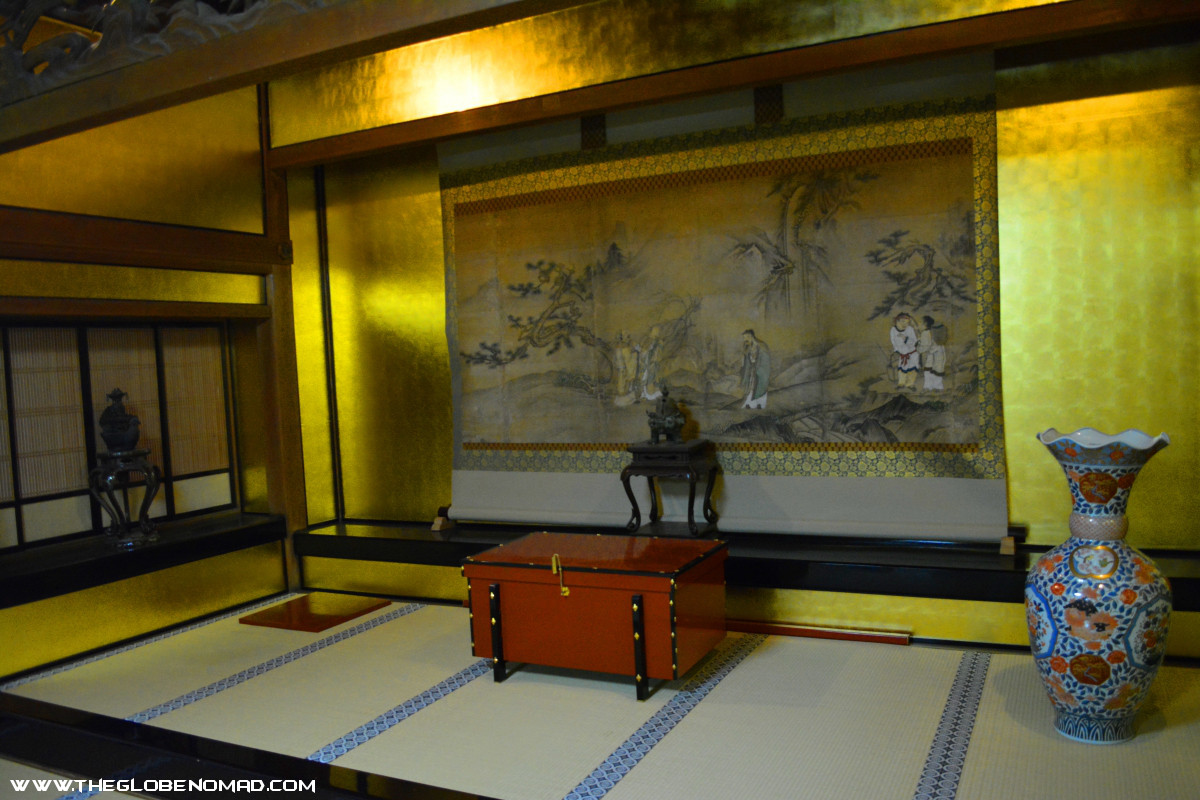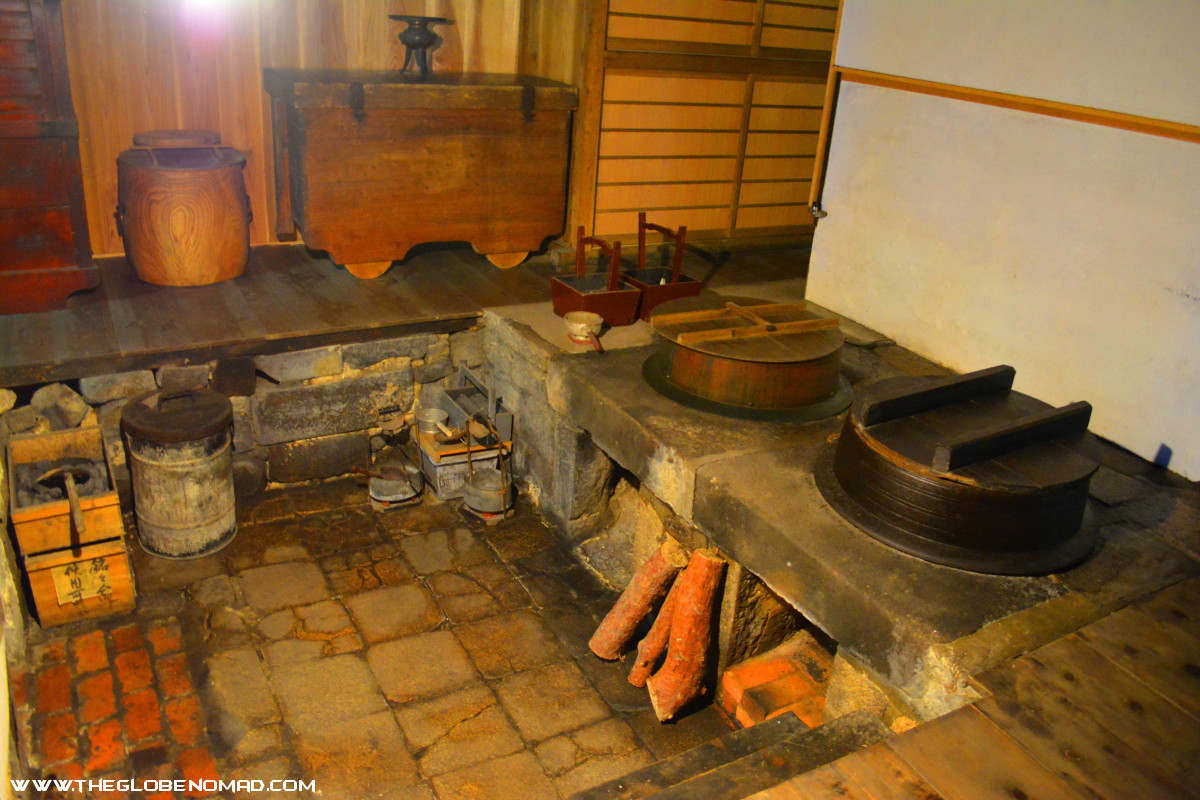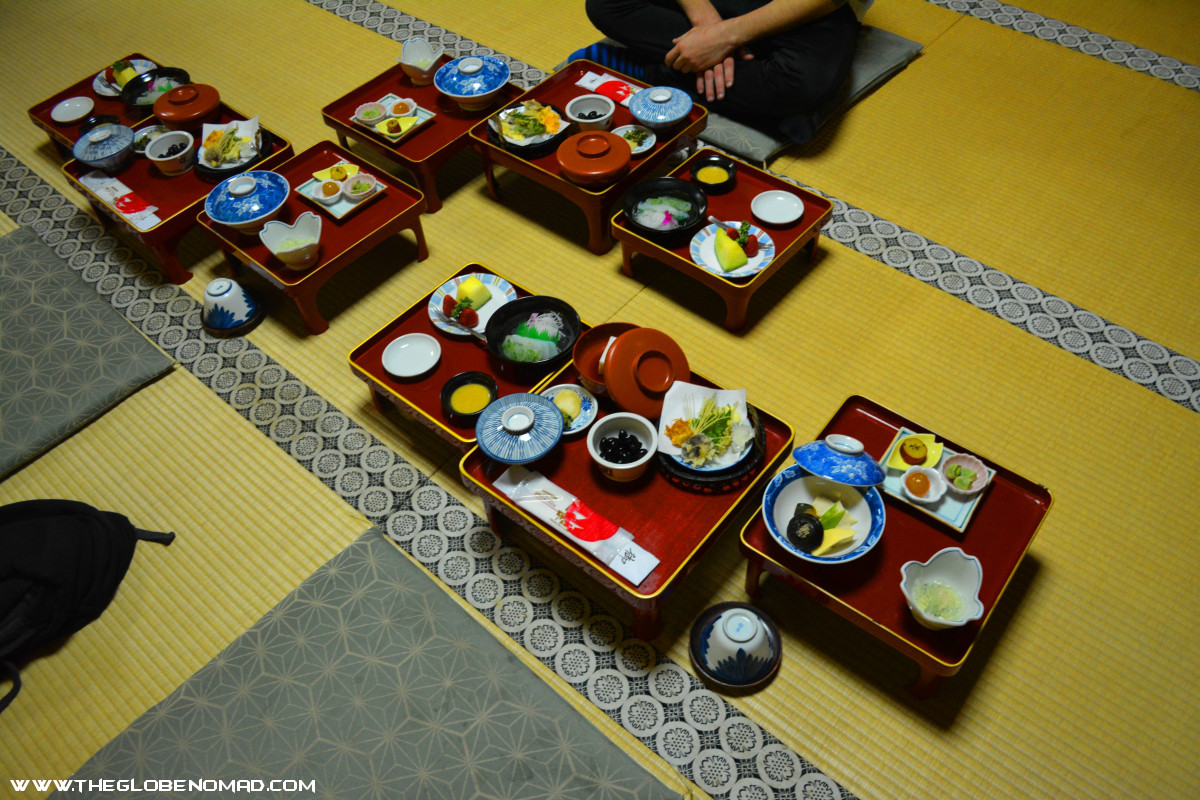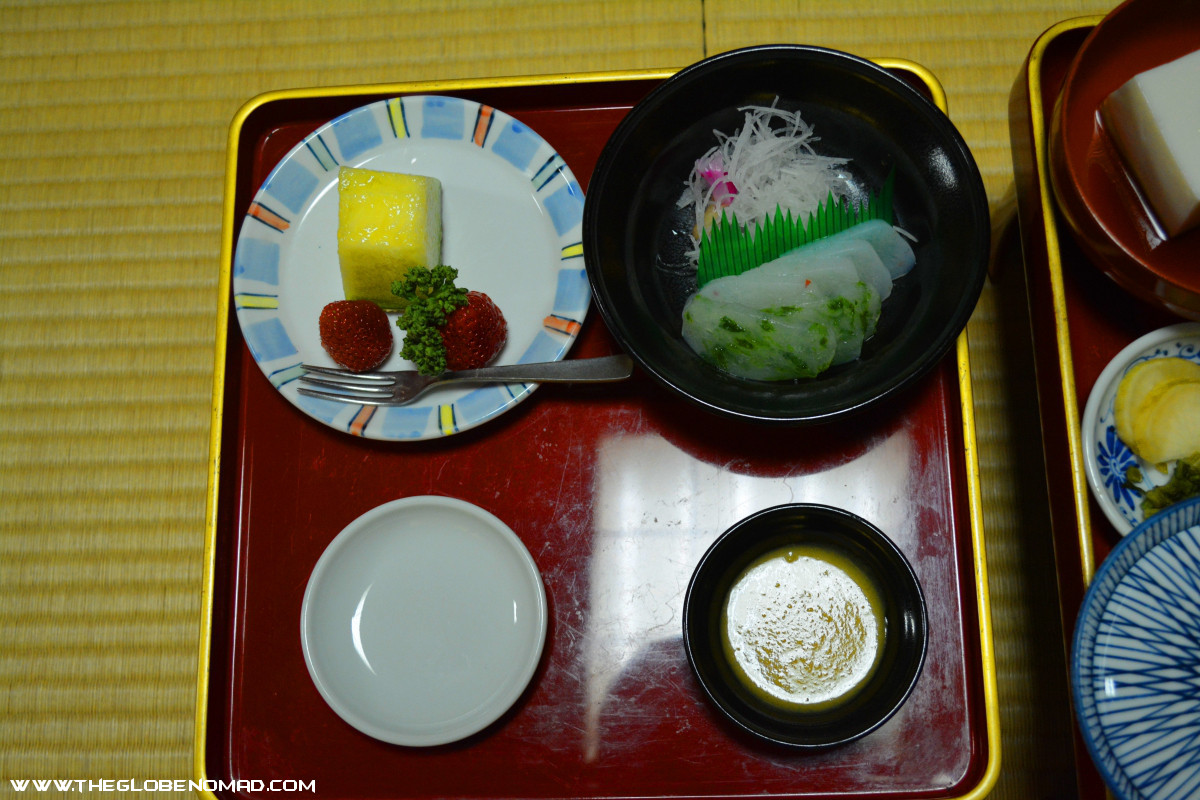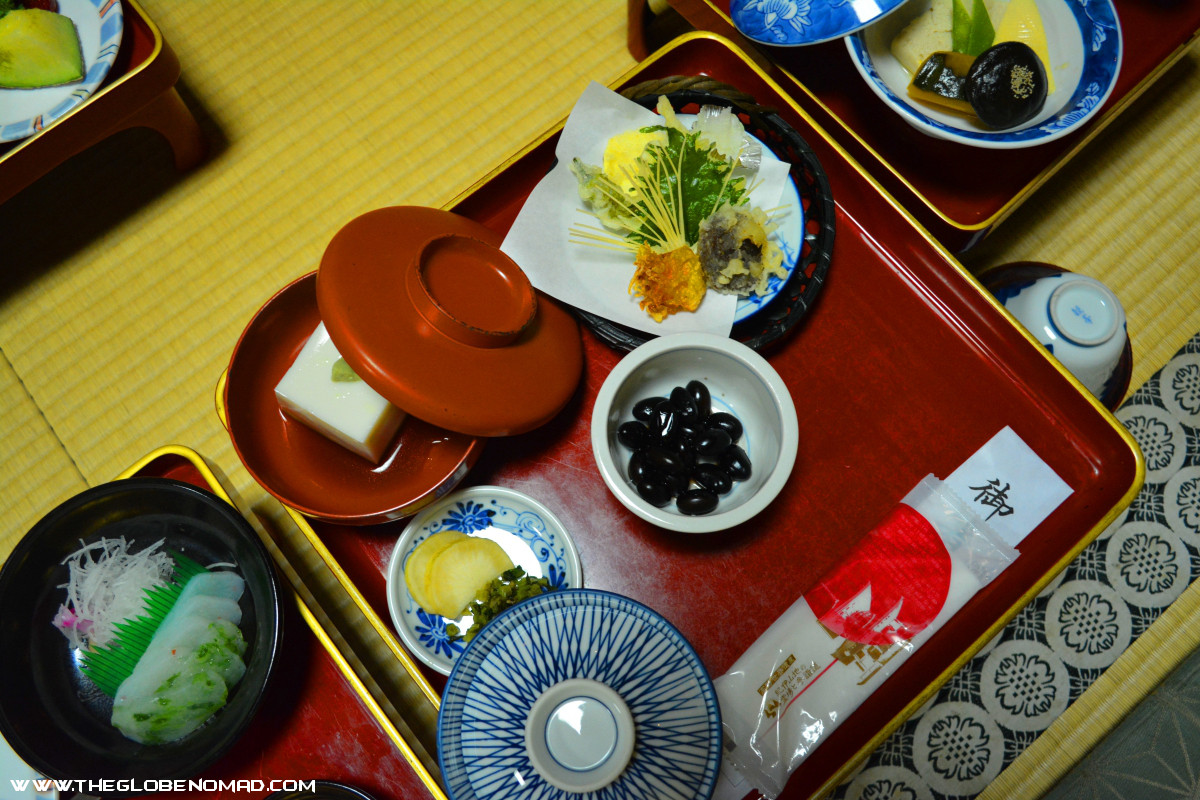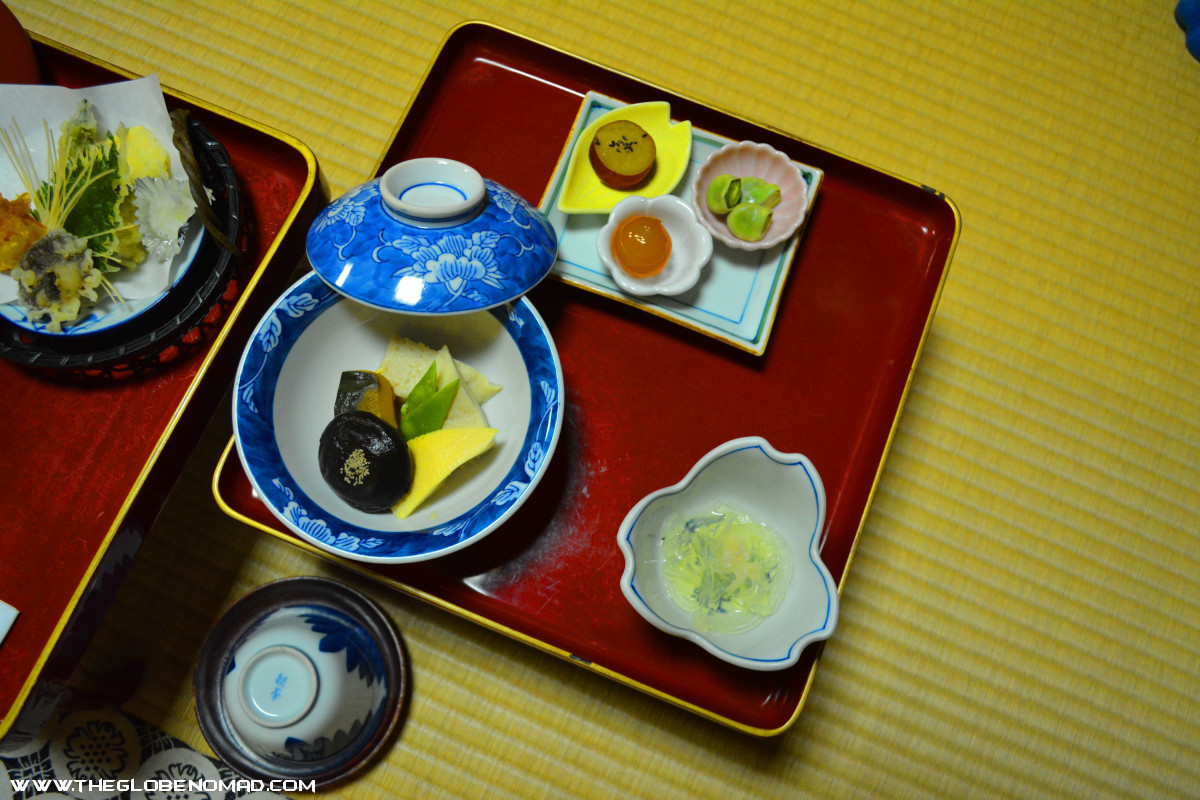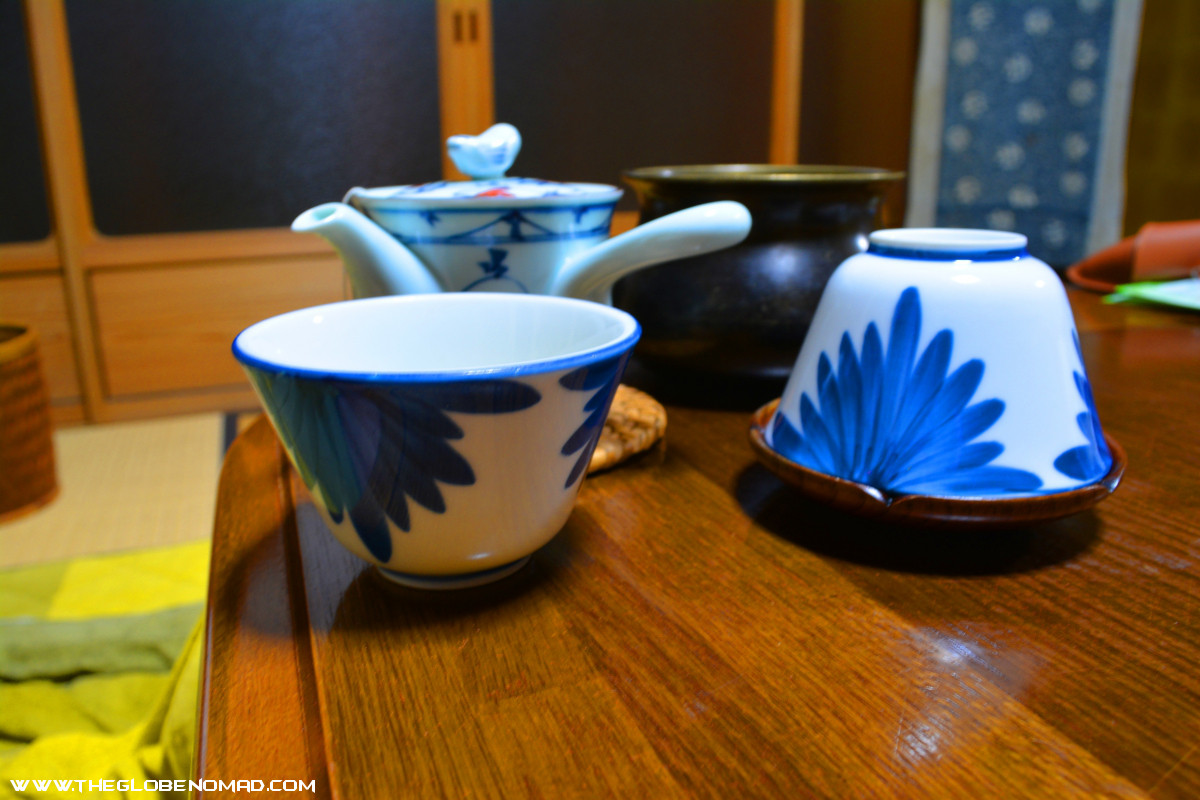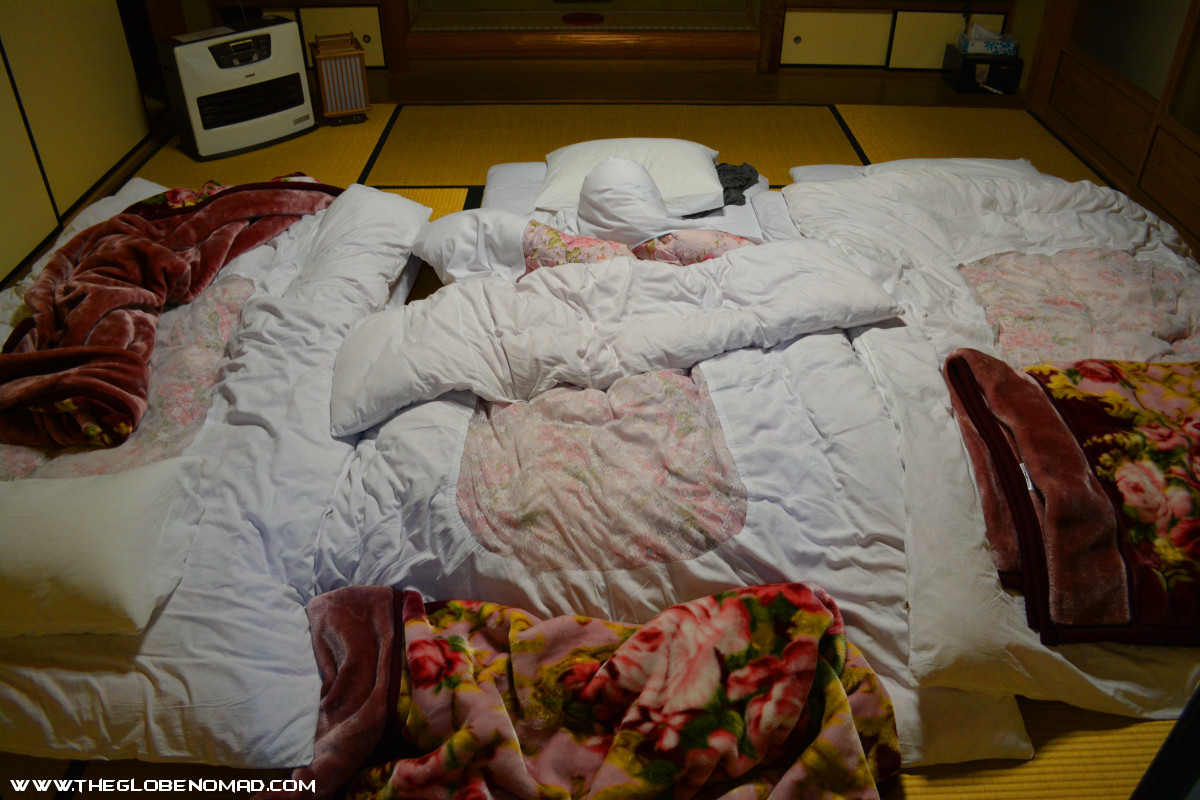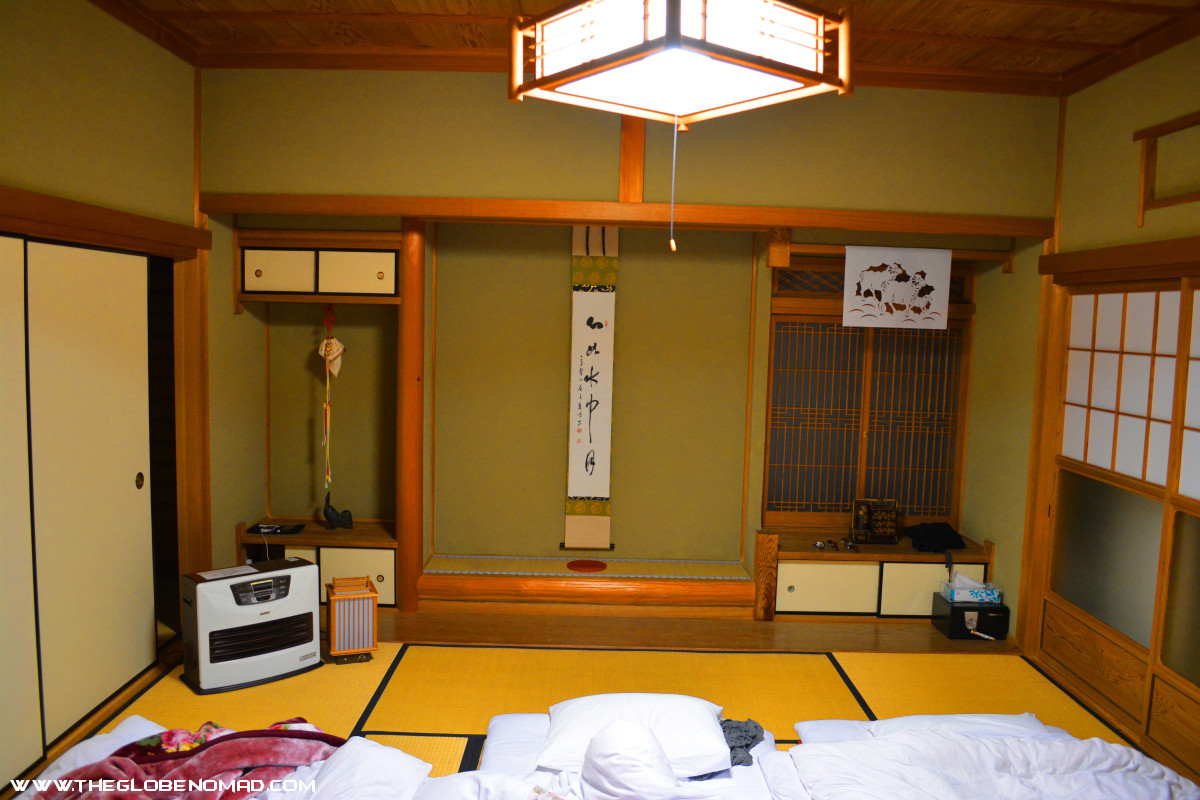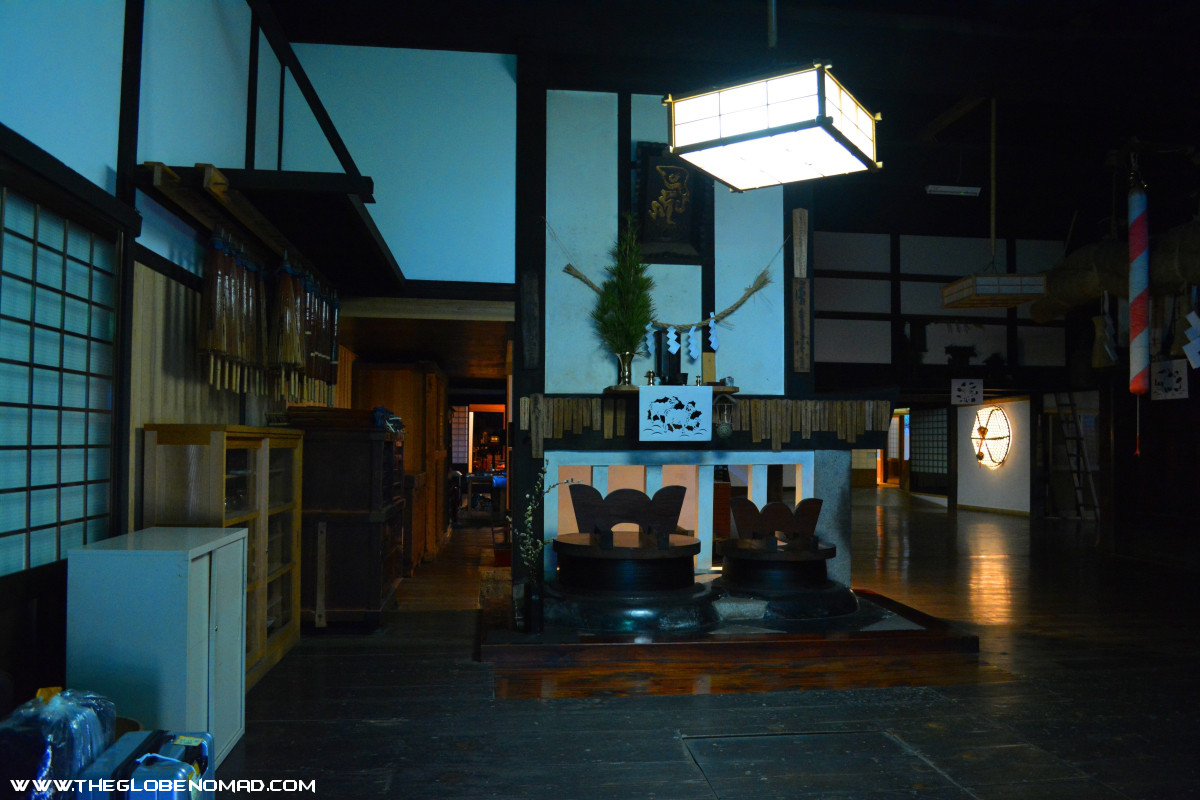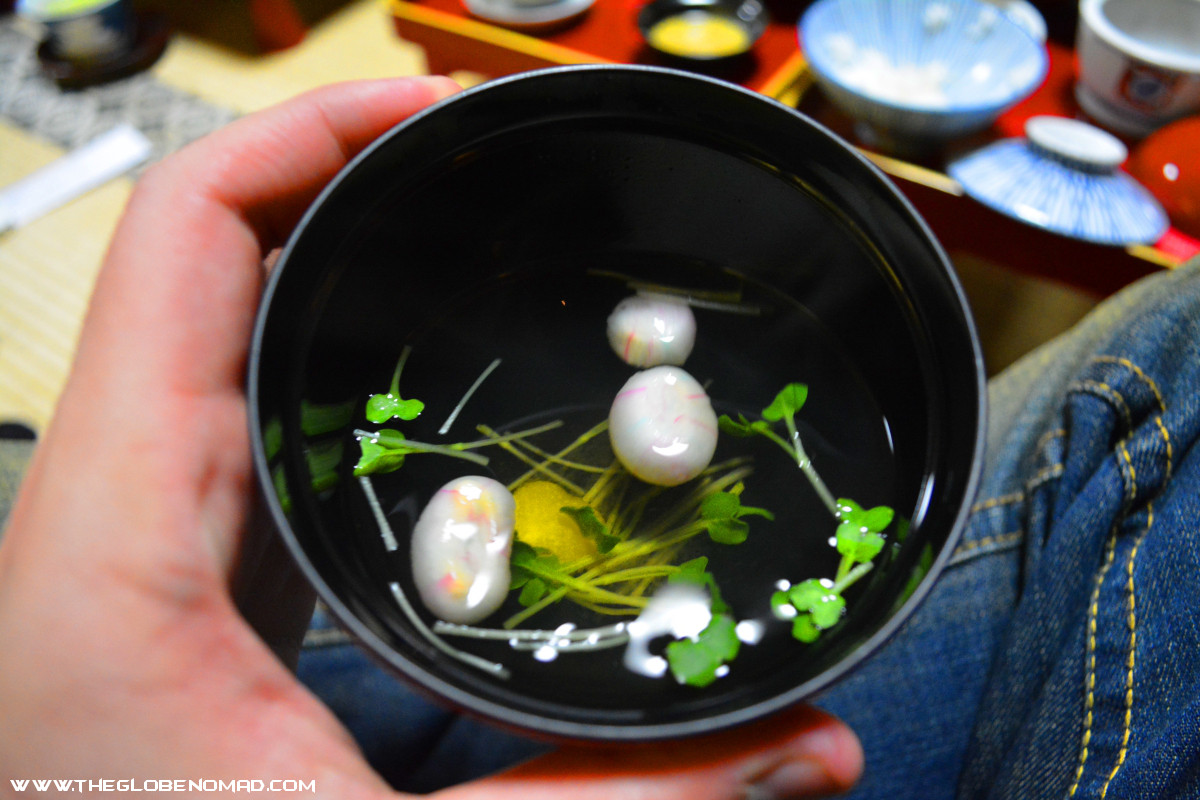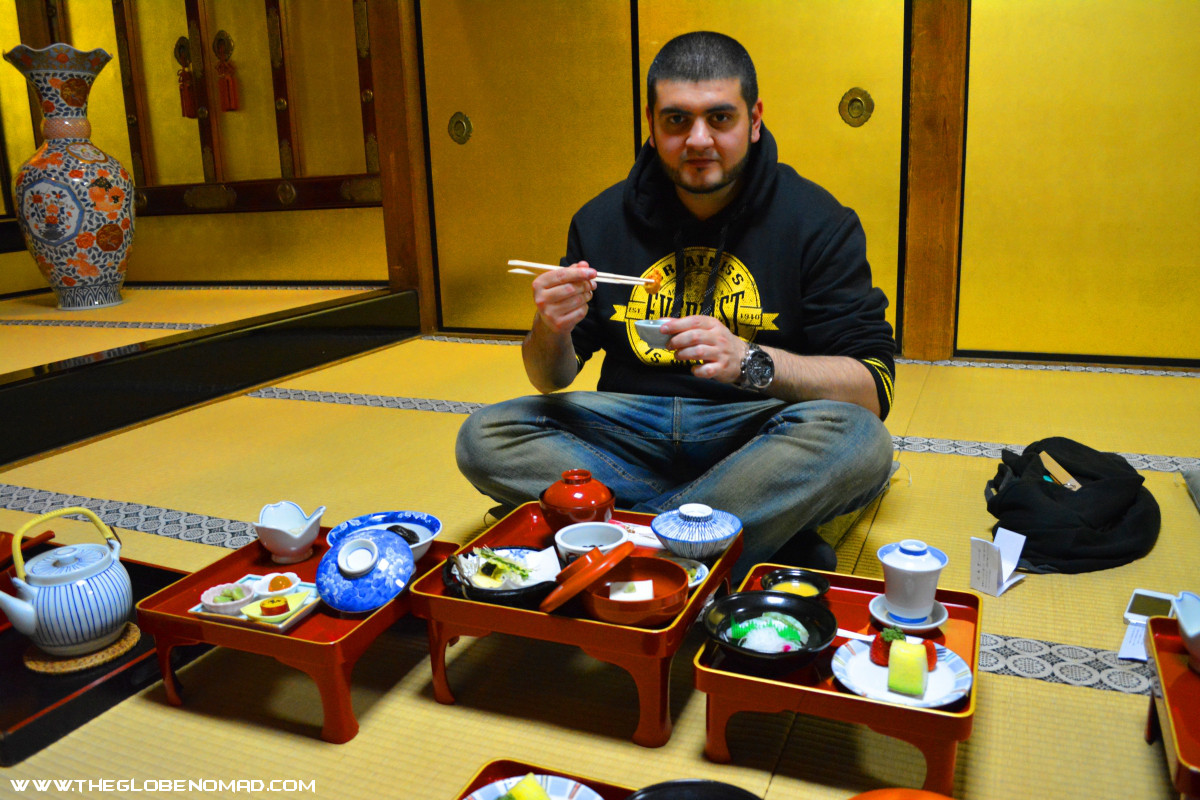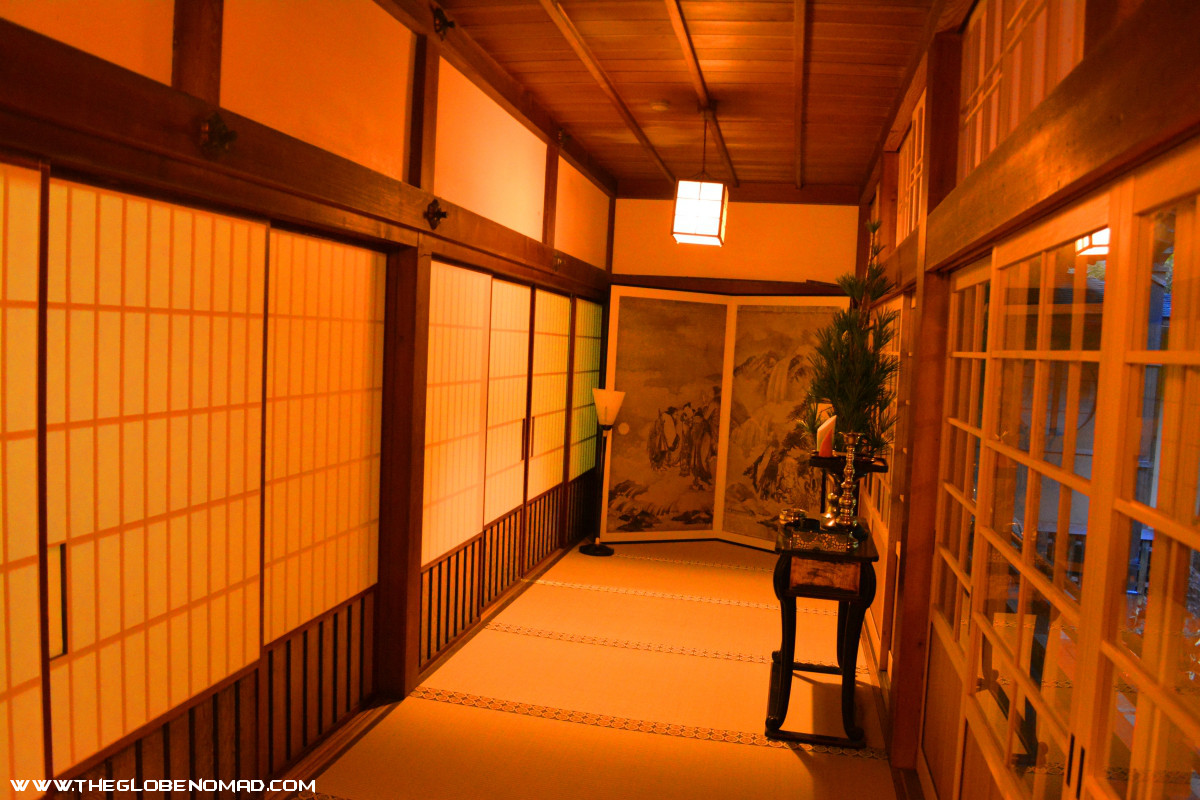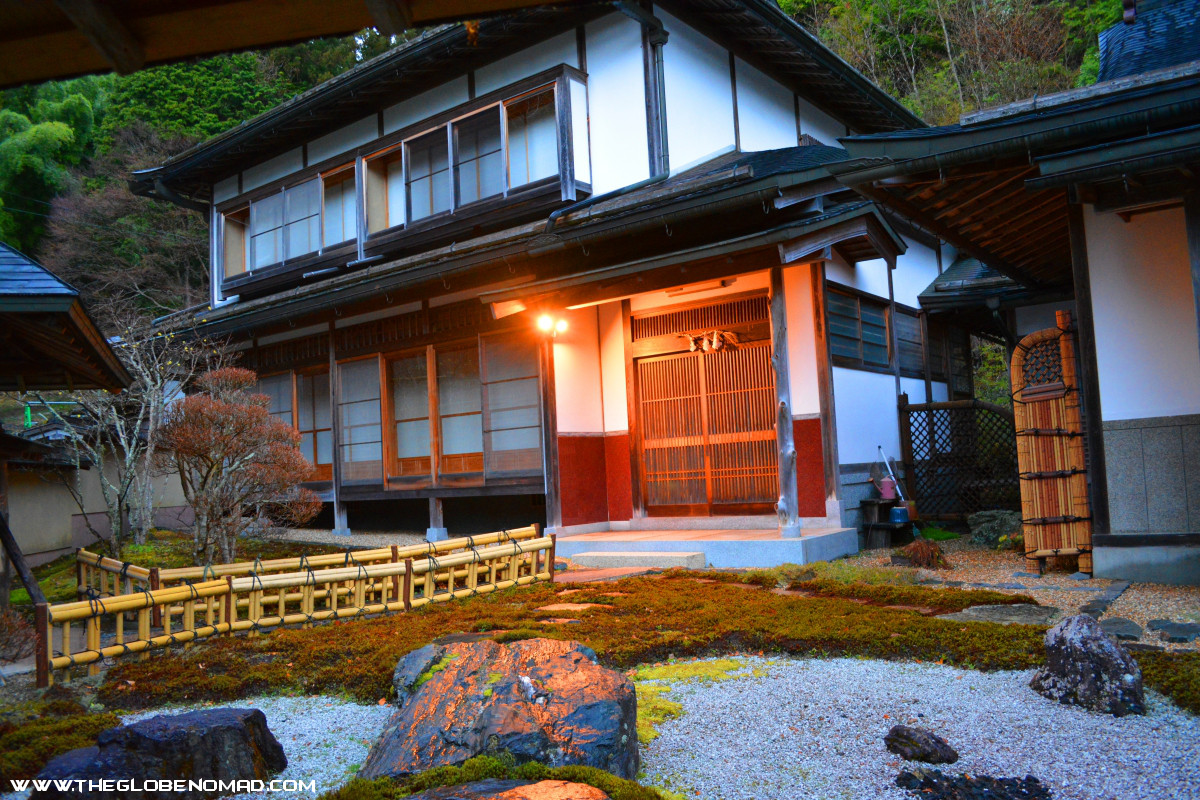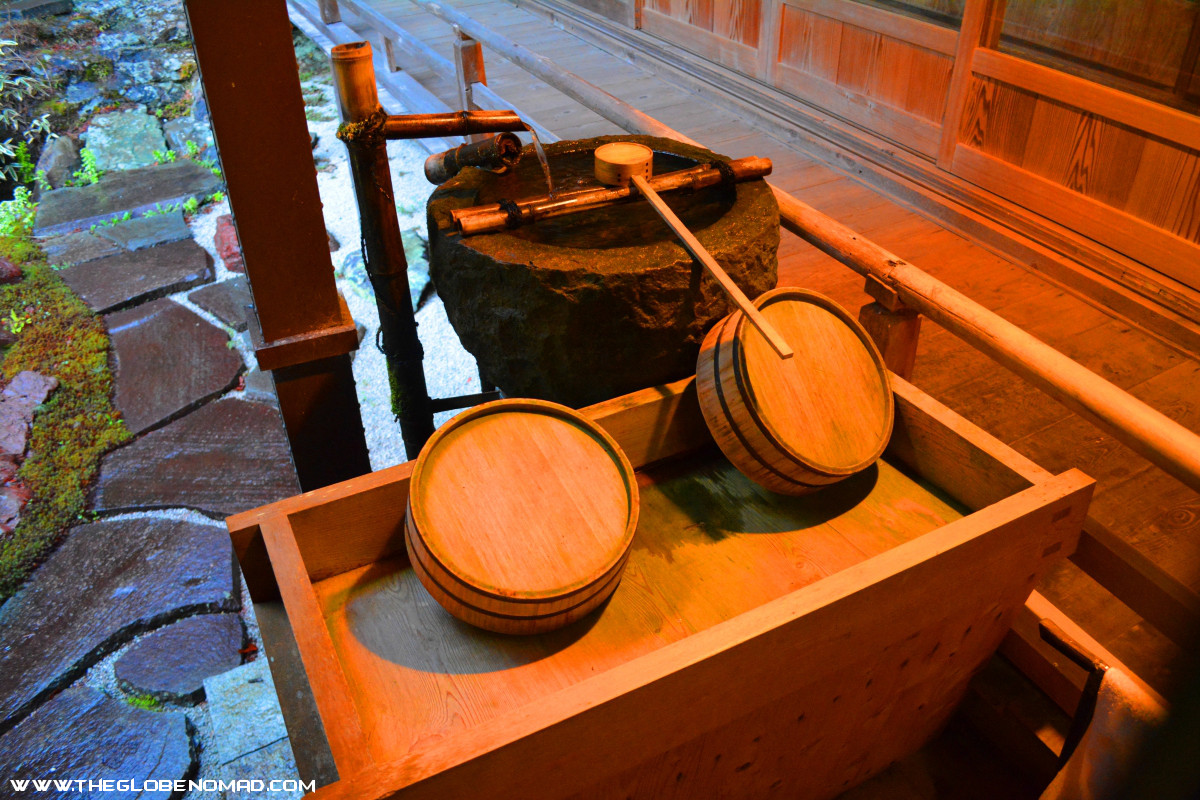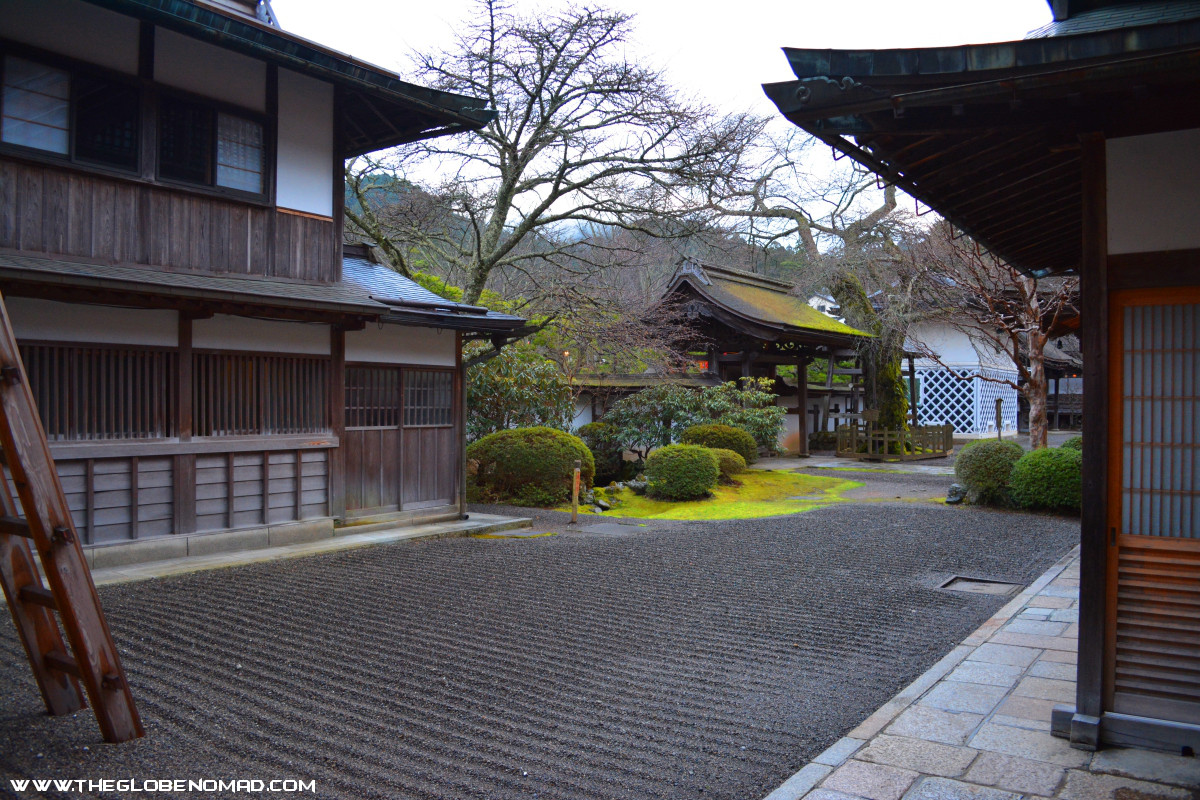Ryokans are inns which can be found throughout Japan. Their main objective is to provide a place to rest and relax. If you research a little for available ryokans in Japan, you will immediately notice a large variety, some of which are located in a city’s centre and others in the more rural parts of Japan. There are different types of ryokans and although some share hotel characteristics, they are far from being considered one. You will not necessarily have your own private toilet or en-suite bathroom. In fact such ryokans tend to cater for very wealthy visitors. The size of the room or rooms depends on the number of people, the availability and the price you are willing to pay. A true ryokan usually has communal baths and tatami-matted rooms. The Japanese garment known as a yukata is also provided to add to the comfortable experience.
Our first ryokan was made up of 2 rooms – a ‘lounging’ area which we turned into our store room for backpacks and a tea room. In the evening after dinner, the tea room was converted into the sleeping room. We had to share basic amenities like bathrooms and a shower with the other guests. The system worked similar to a hostel, but way quieter.
The second ryokan we stayed in was much larger and it was made up of about 5 rooms. We weren’t given a room within the ryokan, in fact it looked more like a medium-sized bungalow in the ryokan’s surrounding grounds. I believe it could have easily accommodated six people. We were lucky to also have a bathroom and a shower inside.
Which Ryokan Should I Choose?
Luxurious Ryokan
Expect prices to be on the high side. The ryokan’s owners and employees will go out of their way to make sure you are happy. Some benefits tied to booking a luxurious ryokan, apart from being treated like royalty include having larger rooms with a bathroom inside. Generally, direct access to a garden is also part of the package, making the experience more unique. Meals, usually breakfast and dinner are also exceptionally good. You will be served kaiseki-style meals which include traditional multi-course Japanese dishes. From a price point of view, the meal alone in a restaurant can cost between $130 up to $350.
Advantages:
- Guaranteed pampering;
- Exceptional food;
- Larger rooms;
- Bathroom and private shower.
Disadvantages:
- Price.
Standard Ryokan
The cheaper, hotel-like version of the ryokan is a common option. They are usually located in cities and in cemented buildings. While basic amenities are Japanese styled, the advantage of living in such a ryokan is probably the price in comparison to the other ryokan options available.
Advantages:
- Good food;
- Prices are cheaper in comparison to other ryokans or hotels;
- Generally located in the centre;
- Good access to the city.
Disadvantages:
- Not the real ryokan you wanted to experience;
- Feels like a hotel;
- Plain and simple room interior;
- Not much traditional character.
Shukubo – Temple Stay
If you cannot afford the luxurious ryokan and you’re travelling on a budget, then this could be the best option. Not all are budget-friendly, but you will find some decent prices if you plan ahead. Shukubos are Buddhist Temples run by the temple’s monks. They are one of the best ways to experience traditional Japanese culture and offer an opportunity to experience a monk’s daily activities. The best place to book a shukubo is in Koyasan. Travellers generally like to spend the night in a shukubo before continuing their journey. Shojin ryori (the art of Japanese vegetarian cuisine) is served for dinner and breakfast the next morning and they are usually included in the price. Before breakfast, you may also attend morning prayers with the monks. I’ve had the opportunity to stay in two shukubos in Koyasan and both experiences were amazing.
Advantages:
- Shojin ryori is amazingly delicious and different;
- Well organized rooms;
- Share some time with monks;
- Good access to areas that contain temple complexes (especially in Koyasan);
- Attend a ceremony.
Disadvantages:
- You need to book as early as possible;
- Some people may not like the sharing of basic amenities;
- Prices may be quite steep;
- Depending on the area and the weather, the place may have some insects.
I believe that staying for some time in a ryokan is the best opportunity for a traveller to experience traditional Japanese culture.
Here are a few photos of the ryokan’s grounds, the inside of the temples and the food.
